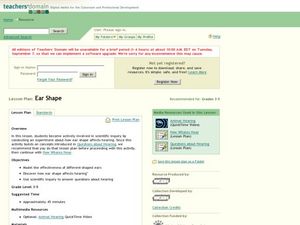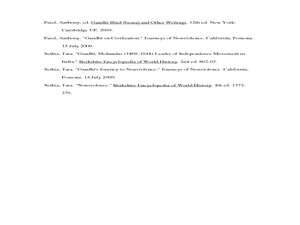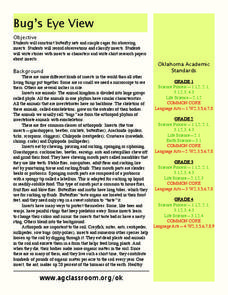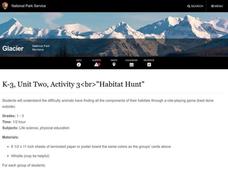Curated OER
Animal Mouth Structures
Students study how the mouth structures of animal show their adaptation. In this animal mouth structure lesson, students look at images of bird and animal mouths as they are feeding focusing on the shape of each. They watch a movie that...
Curated OER
Ear Shape
Students explore hearing. In this hearing and sound lesson, students participate in a scientific inquiry to compare ear shape and hearing ability. Students work with a partner to listen to soft music and use various materials...
Curated OER
Sea Turtle Rescue
Students create a three column chart about working with wildlife and how different organizations help sea turtles. In this sea turtles lesson plan, students compare the Oregon Coast Aquarium, the Coast Guard, and Sea World and what they...
Curated OER
Getting t Know Theodore Roosevelt, Jane Addams, Booker T. Washington, and Woodrow Wilson
Students study what reform means. In this social science lesson, students are put into small groups and create posters, oral reports, or role plays on the life and work of either Theodore Roosevelt, Jane Addams, Booker T....
Curated OER
Texture - Bumpy, Wrinkled, Smooth?
Students study textures and identify textures using satellite images. In this texture lesson, students study various objects and define their textures. Students feel crayon rubbings and sort them into groups. Students use a book with...
Curated OER
Nonviolence and Conflict: Its Importance to Building Community
Students study nonviolence and the values associated with nonviolence. In this social science lesson, students identify the six steps of nonviolence and the six principles of nonviolence as put forth by Martin Luther King, Jr. Students...
Curated OER
So You Want to Be President?
Students examine the qualities needed to become President. In this political science lesson, students read the book So You Want to Be President? and answer questions based on the text. Students discuss if they have the qualities...
Curated OER
Bug's Eye View
Young scholars explore biology by writing fictitious stories in class. In this insect life lesson, students identify many different types of insects in the animal kingdom and the classifications they fall into. Young scholars collect...
Curated OER
Habitat Hunt
Learners discover how hard it is for animals to find all the items needed in their habitat. In this habitat lesson, students play a game in which they pretend to be an animal, they discover that not all animals can find the food needed...
Curated OER
Track Stories
Young scholars identify animal tracks. In this animal track lesson, students look at "track stories" and identify the animals that made the tracks. Young scholars discuss if they believe the animals are predators or prey.
Curated OER
The Peanut Wizard
Peanuts inspire this lesson about George Washington Carver, called The Peanut Wizard in the included informational text. Class members read about peanuts and George Washington Carver and create a timeline of his life. In addition, pupils...
Curated OER
The Seed Store
Young scholars investigate the seed cycle. For this plant biology lesson, students plant tomato seeds and observe the plant growth. Young scholars complete an activity sheet.
Curated OER
Aquatic Organisms
Pupils create a poster describing the five characteristics of a salt water organism compared to a fresh water organism.
Curated OER
Pond 1: Pond Life
Learners work together to investigate familiar and unfamiliar ecosystems. Using the internet, they discover how different organisms use their environment to satisfy their needs. They also examine the relationshiops between organisms...
Curated OER
Brine Shrimp
Students gain a sense of the delicacy and complexity of a living organism and the rather narrow range of conditions under which it can live.
Curated OER
Ecosystems
Third graders identify and define an Ecosystem and the basic needs of all animals. They collect pond water in a pickle jar. They observe the organisms that are in the jar to keep an ongoing record of the creatures and their population.















